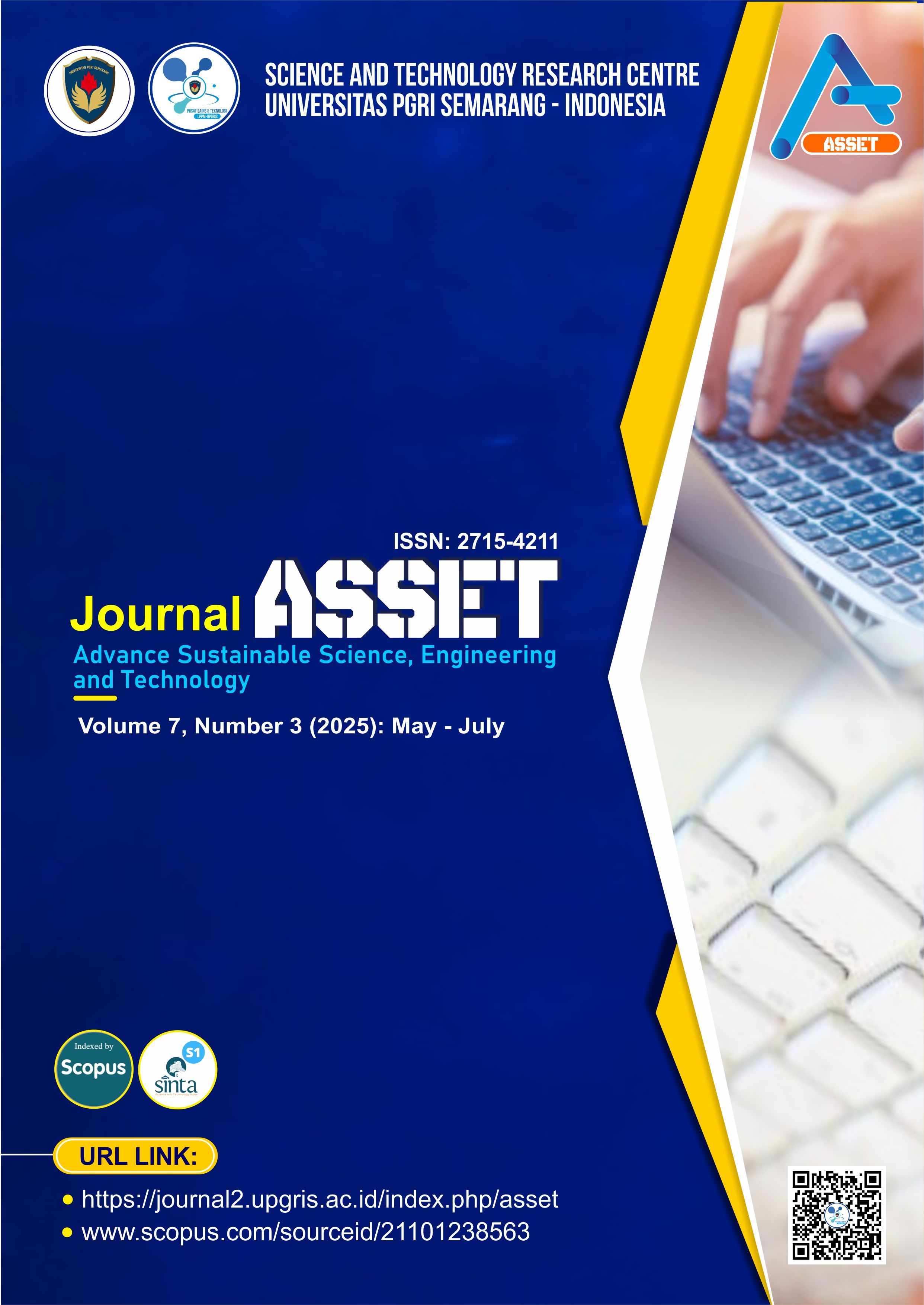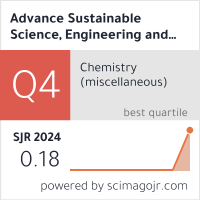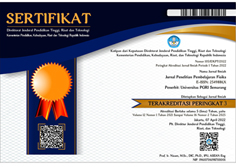Predicting Habitat Suitability of Mahseer Fish (Tor spp.) in Tropical River Systems Using MaxEnt and Google Earth Engine: A Geospatial Modeling Approach
DOI:
https://doi.org/10.26877/asset.v7i3.2201Keywords:
Mahseer Fish, Habitat Prediction, Google Earth Engine, Remote Sensing, MaxEnt Machine LearningAbstract
Rivers are vital freshwater habitats that face threats of degradation and climate change. Mahseer fish, a key species, is in decline. This study predicted Mahseer fish habitats in Central Java using the Google Earth Engine and the MaxEnt machine learning algorithm. Environmental predictors, including NDVI, elevation, slope, river order, temperature, and rainfall, were extracted from Sentinel, SRTM, MODIS, and CHIRPS data. The model identified river order as the most influential variable (73%), followed by elevation (18%) and rainfall (8%), with an AUC score of 0.7, indicating fair accuracy. Suitable habitats were located in upstream river orders (1–3), typically at higher elevations. These findings provide spatial guidance for conservation planning, such as identifying critical habitats, prioritizing upstream areas, and establishing seasonal fishing ban. This approach supports biodiversity protection and aligns with the Sustainable Development Goals by offering a scalable tool for freshwater ecosystem management. Using MaxEnt with GEE shows promise for rapid, and cost-effective species distribution modeling in data-limited tropical regions.
References
[1] Everard M, Pinder AC, Claussen JE, Orr S. Assessing the societal benefits of mahseer (Tor spp.) fishes to strengthen the basis for their conservation. Aquatic Conservation: Marine and Freshwater Ecosystems 2021;31:2979–86. https://doi.org/10.1002/aqc.3683.
[2] Muchlisin ZA, Nur FM, Maulida S, Syahfrida Handayani L, Riska Rahayu S. Mahseer, the history of the king of the river. E3S Web of Conferences, vol. 339, 2022, p. 03006. https://doi.org/10.1051/e3sconf/202233903006.
[3] Johnson JA, Dhawan B, Sivakumar K. Study on ecology and migratory patterns of golden mahseer (Tor putitora) in river Ganga using Radio telemetry techniques, Wildlife Institute of India Project Report. Wildlife Institute of India: 2021. https://doi.org/10.13140/RG.2.2.30906.06084.
[4] Larashati S, Sulastri, Ridwansyah I, Afandi AY, Novianti R. Conservation efforts of ikan Batak (Tor spp. and Neolissochilus spp.) and its prospects to support ecotourism in Samosir Regency, North Sumatra Indonesia. IOP Conference Series: Earth and Environmental Science 2020;535:0–10. https://doi.org/10.1088/1755-1315/535/1/012041.
[5] Jha BR, Rayamajhi A, Dahunakar N, Harrison A, Pinder A. Tor putitora. The IUCN Red List of Threatened Species 2018. The IUCN Red List of Threatened Species 2018: ET126319882A126322226 2018. https://doi.org/https://dx.doi.org/10.2305/IUCN.UK.
[6] Kottelat M. Tor laterivittatus. The IUCN Red List of Threatened Species 2018. The IUCN Red List of Threatened Species 2018: ET187921A126323049 2018. https://doi.org/https://dx.doi.org/10.2305/IUCN.UK.
[7] Pinder AC, Katwate U, Dahanukar N, Harrison AJ. Tor remadevii. The IUCN Red List of Threatened Species 2018. Tor Remadevii The IUCN Red List of Thretened Species 2018: ET56096394A56717605 2018. https://doi.org/https://dx.doi.org/10.2305/IUCN.UK.
[8] Raghavan R, Ali A. Tor malabaricus. The IUCN Red List of Threatened Species. The IUCN Red List of Threatened SpeciesA6895822 2011. https://doi.org/dx.doi.org/10.2305/IUCN.UK.
[9] Kottelat M, Pinder AC, Harrison AJ. Tor tambroides. The IUCN Red List of Threatened Species 2018. The IUCN Red List of Threatened Species 2018: ET187939A91076554 2018. https://doi.org/https://dx.doi.org/10.2305/IUCN.UK.
[10] Abass Z, Shah, T H, Bhat, F A, Ramteke K, Magloo, A H, Hamid I, et al. The mahseer: The tiger of water-an angler’s delight in the Himalayas and the undisputed king of sport fishing. Fisheries Research 2024;279. https://doi.org/https://doi.org/10.1016/j.fishres.2024.107147 Get rights and content.
[11] Gupta N, Everard M, Nautiyal P, Kochhar I, Sivakumar K, Johnson JA, et al. Potential impacts of non-native fish on the threatened mahseer (Tor) species of the Indian Himalayan biodiversity hot spot. Aquatic Conservation: Marine and Freshwater Ecosystems 2020;30:394–401. https://doi.org/10.1002/aqc.3275.
[12] Manju G, Binson VA. Automated Disease Detection in Silkworms Using Machine Learning Techniques. Advance Sustainable Science, Engineering and Technology 2024;6:1–10. https://doi.org/10.26877/asset.v6i4.965.
[13] Ariska R, Sari CA, Rachmawanto EH. Classification of Corn Leaf Disease Using Convolutional Neural Network. Advance Sustainable Science Engineering and Technology 2024;6:0240408. https://doi.org/10.26877/asset.v6i4.772.
[14] Lissovsky AA, Dudov S V. Species-Distribution Modeling: Advantages and Limitations of Its Application. 2. MaxEnt. Biology Bulletin Reviews 2021;11:265–75. https://doi.org/10.1134/s2079086421030087.
[15] Kiedrzynsky M, Zielinska KM, Rewicz A, Kiedrzynska E. Habitat and spatial thinning improve the Maxent models performed with incomplete data. Journal of Geophysical Research: Biogeosciences 2017;122:1359–70. https://doi.org/doi:10.1002/ 2016JG003629.
[16] McGarvey DJ, Brown AL, Chen EB, Viverette CB, Tuley PA, Latham, O C, et al. Do fishes enjoy the view? A MaxEnt assessment of fish habitat suitability within scenic rivers. Biological Conservation 2021;263:109357. https://doi.org/https://doi.org/10.1016/j.biocon.2021.109357.
[17] Aksu S. Current and future potential habitat suitability prediction of an endemic freshwater fish species Seminemacheilus lendlii (Hankó, 1925) using Maximum Entropy Modelling (MaxEnt) under climate change scenarios: implications for conservation. Journal of Limnology and Freshwater Fisheries Research 2021;7:83–91. https://doi.org/10.17216/limnofish.758649.
[18] Mamun M, Kim S, An KG. Distribution pattern prediction of an invasive alien species largemouth bass using a maximum entropy model (MaxEnt) in the Korean peninsula. Journal of Asia-Pacific Biodiversity 2018;11:516–24. https://doi.org/10.1016/j.japb.2018.09.007.
[19] Mahato R, Nimasow G, Nimasow OD, Abujam S. Habitat Suitability Modeling of Tor tor (Hamilton, 1822) in the Indian Drainage Systems Using MaxEnt. Ecosystem and Species Habitat Modeling for Conservation and Restoration, Singapore: Springer Nature Singapore; 2023, p. 323–37. https://doi.org/10.1007/978-981-99-0131-9_17.
[20] Mahato R, Abujam S, Bushi D, Nimasow OD, Nimasow G, Das DN. Distribution modelling of Tor putitora (Hamilton, 1822), an endangered cyprinid in the Himalayan river system using MaxEnt. Acta Ecologica Sinica 2023;4:343–51. https://doi.org/https://doi.org/10.1016/j.chnaes.2022.01.004.
[21] Phillips SJ, Dudik M. Modeling of Species Distributions with MaxEnt: new extensions and a comprehensive evaluation. Ecography 2008;31:161–75. https://doi.org/10.1111/j.2007.0906-7590.05203.x.
[22] Jurka TimothyP. maxent: An R Package for Low-memory Multinomial Logistic Regression with Support for Semi-automated Text Classification. The R Journal 2012;4:56–9.
[23] Elosegi A, Díez J, Mutz M. Effects of hydromorphological integrity on biodiversity and functioning of river ecosystems. Hydrobiologia 2010;657:199–215. https://doi.org/10.1007/s10750-009-0083-4.
[24] Yu Z, Fu Y, Zhang Y, Liu Z, Liu Y. Quantifying the Impact of Changes in Sinuosity on River Ecosystems. Water (Switzerland) 2023;15. https://doi.org/10.3390/w15152751.
[25] Zamroni A, Faustino-Eslava Decibel v. Geological Factors Influencing River Morphological Changes: Implications in the Agricultural Sector. In: Chiang PC, editor. Environment and Renewable Energy, Springer Singapore; 2023, p. 117–126. https://doi.org/https://doi.org/10.1007/978-981-97-0056-1_10.
[26] Gorelick N, Hancher M, Dixon M, Ilyushchenko S, Thau D, Moore R. Google Earth Engine: Planetary-scale geospatial analysis for everyone. Remote Sensing of Environment 2017;202:18–27. https://doi.org/10.1016/j.rse.2017.06.031.
[27] Listyarini DW, Sulmartiwi L, Hasan V, Andriyono S. Morphological Characteristics Of Two Species Mahseers Fish (Cyprinidae; Torinae) From East Java. Jurnal Kelautan Dan Perikanan Terapan 2022;5:171–8.
[28] Jailani AQ, Mujtahidah T. Study of Iktiofauna Biodiversity Based on Geographical Information Systems (GIS) in the Progo River, Magelang, Central Java. Journal of Aquaculture Science 2021;6:38–47. https://doi.org/10.31093/joas.v6i1.136.
[29] Haryono, Tjakrawidjaja AH. Morphological Study for Identification Improvement of Tambra Fish (Tor spp.: Cyprinidae) from Indonesia. Biodiversitas Journal of Biological Diversity 2006;7:59–62. https://doi.org/10.13057/biodiv/d070115.
[30] Nahib I, Amhar F, Wahyudin Y, Ambarwulan W, Suwarno Y, Suwedi N, et al. Spatial-Temporal Changes in Water Supply and Demand in the Citarum Watershed, West Java, Indonesia Using a Geospatial Approach. Sustainability (Switzerland) 2023;15. https://doi.org/10.3390/su15010562.
[31] Husodo T, Ali Y, Mardiyah SR, Shanida SS, Abdoellah OS, Wulandari I. Perubahan lahan vegetasi berbasis citra satelit di DAS Citarum, Bandung, Jawa Barat. Majalah Geografi Indonesia 2021;35:54. https://doi.org/10.22146/mgi.61217.
[32] Ho LT, Goethals PLM. Opportunities and challenges for the sustainability of lakes and reservoirs in relation to the Sustainable Development Goals (SDGs). Water (Switzerland) 2019;11:1–19. https://doi.org/10.3390/w11071462.
[33] Stokes GL, Lynch AJ, Smidt SJ, Steel EA, Dowd S, Britton JR, et al. Life on land needs fresh water (SDG 15). In: Mukherjee A, Matters W, editors. Water Matters, Elsevier; 2024, p. 295–309. https://doi.org/10.1016/b978-0-443-15537-6.00024-0.
[34] Crego RD, Stabach JA, Connette G. Implementation of species distribution models in Google Earth Engine. Diversity and Distributions 2022;28:904–16. https://doi.org/10.1111/ddi.13491.
[35] Warton DI, Shepherd LC. Poisson point process models solve the “pseudo-absence problem” for presence-only data in ecology. Annals of Applied Statistics 2010;4:1383–402. https://doi.org/10.1214/10-AOAS331.
[36] Barbet-Massin M, Jiguet F ric, Albert CH le`ne, Thuiller W. Selecting pseudo-absences for species distribution models: how, where and how many? Morgane. Methods in Ecology and Evolution 2012;3:327–38. https://doi.org/doi: 10.1111/j.2041-210X.2011.00172.x.
[37] Jaafar F, Na-Nakorn U, Srisapoome P, Amornsakun T, Duong TY, Gonzales-Plasus MM, et al. A Current Update on the Distribution, Morphological Features, and Genetic Identity of the Southeast Asian Mahseers, Tor Species. Biology 2021;10. https://doi.org/10.3390/biology10040286.
[38] Lehner B, Grill G. Global river hydrography and network routing: Baseline data and new approaches to study the world’s large river systems. Hydrological Processes 2013;27:2171–86. https://doi.org/10.1002/hyp.9740.
[39] Amatulli G, Garcia Marquez J, Sethi T, Kiesel J, Grigoropoulou A, Üblacker MM, et al. Hydrography90m: A new high-resolution global hydrographic dataset. Earth System Science Data 2022;14:4525–50. https://doi.org/10.5194/essd-14-4525-2022.
[40] Muchlisin ZA, Fadli N, Batubara AS, Nur FM, Irham M, Muhammadar AA, et al. Taxonomic Diversity of the Genus Tor (Cyprinidae) From Aceh Waters in Indonesia Based on Cytochrome Oxidase Sub-Unit I (Coi) Gene. Zoodiversity 2022;56:195–202. https://doi.org/10.15407/zoo2022.03.195.
[41] Huang C, Yang Q, Huang W. Analysis of the spatial and temporal changes of NDVI and its driving factors in the wei and jing river basins. International Journal of Environmental Research and Public Health 2021;18. https://doi.org/10.3390/ijerph182211863.
[42] Ndehedehe CE, Burford MA, Stewart-Koster B, Bunn SE. Satellite-derived changes in floodplain productivity and freshwater habitats in northern Australia (1991–2019). Ecological Indicators 2020;114:106320. https://doi.org/10.1016/j.ecolind.2020.106320.
[43] Sharma P, Varga M, Kerezsi G, Kajári B, Halasi-Kovács B, Békefi E, et al. Estimating Reed Bed Cover in Hungarian Fish Ponds Using NDVI-Based Remote Sensing Technique. Water (Switzerland) 2023;15. https://doi.org/10.3390/w15081554.
[44] Vieira TB, Dias-Silva K, Pacífico ES. Effects of riparian vegetation integrity on fish and Heteroptera communities. Applied Ecology and Environmental Research 2015;13:53–65. https://doi.org/10.15666/aeer/1301_053065.
[45] Wang F, Wang X, Zhao Y, Yang Z. Temporal variations of NDVI and correlations between NDVI and hydro-climatological variables at Lake Baiyangdian, China. International Journal of Biometeorology 2014;58:1531–43. https://doi.org/10.1007/s00484-013-0758-4.
[46] Patrick AES. Influence of rainfall and water level on inland fisheries production: A review. Scholars Research Library Archives of Applied Science Research 2016;8:44–51.
[47] Sanches PV, Gogola TM, Silva RO, Topan DA, dos Santos Picapedra PH, Piana PA. Arms as areas for larval development of migratory fish species in a Neotropical reservoir and the influence of rainfall over abundances. Journal of Fish Biology 2020;97:1306–16. https://doi.org/10.1111/jfb.14474.
[48] Wang F, Chen H, Lian J, Fu Z, Nie Y. Hydrological response of karst stream to precipitation variation recognized through the quantitative separation of runoff components. Science of the Total Environment 2020;748:142483. https://doi.org/10.1016/j.scitotenv.2020.142483.
[49] Ng’onga M, Kalaba FK, Mwitwa J, Nyimbiri B. The interactive effects of rainfall, temperature and water level on fish yield in Lake Bangweulu fishery, Zambia. Journal of Thermal Biology 2019;84:45–52. https://doi.org/10.1016/j.jtherbio.2019.06.001.
[50] Koushali PH, Mastouri R, Khaledian MR. Impact of Precipitation and Flow Rate Changes on the Water Quality of a Coastal River. Shock and Vibration 2021;2021. https://doi.org/10.1155/2021/6557689.
[51] Camana M, Dala-Corte RB, Becker FG. Relation between species richness and stream slope in riffle fish assemblages is dependent on spatial scale. Environmental Biology of Fishes 2016;99:603–12. https://doi.org/10.1007/s10641-016-0502-0.
[52] Stuart CE, Wedding LM, Pittman SJ, Green SJ. Habitat suitability modeling to inform seascape connectivity conservation and management. Diversity 2021;13:1–20. https://doi.org/10.3390/d13100465.
[53] Hair JF, Hult GTM, Ringle CM, Sarstedt M, Danks NP, Ray S. Evaluation of Formative Measurement Models. 2021. https://doi.org/10.1007/978-3-030-80519-7_5.
[54] Mahato R, Abujam S, Bushi D, Nimasow OD, Nimasow G, Das DN. Distribution modelling of Tor putitora (Hamilton, 1822), an endangered cyprinid in the Himalayan river system using MaxEnt. Acta Ecologica Sinica 2022. https://doi.org/10.1016/j.chnaes.2022.01.004.
[55] Singh AK, Srivastava SC, Verma P. MaxEnt distribution modeling for predicting Oreochromis niloticus invasion into the Ganga river system , India and conservation concern of native fish biodiversity. Aquatic Ecosystem Health & Management 2021;24:43–51. https://doi.org/10.14321/aehm.024.02.08.
[56] Vorste VR, McElmurray P, Bell S, Eliason KM, Brown BL. Does stream size really explain biodiversity patterns in lotic systems? A call for mechanistic explanations. Diversity 2017;9:1–21. https://doi.org/10.3390/d9030026.
[57] Zhang Z, Gao J, Cai Y. Effects of Land Use Characteristics, Physiochemical Variables, and River Connectivity on Fish Assemblages in a Lowland Basin. Sustainability (Switzerland) 2023;15. https://doi.org/10.3390/su152215960.
[58] Cheng ST, Herricks EE, Tsai WP, Chang FJ. Assessing the natural and anthropogenic influences on basin-wide fish species richness. Science of the Total Environment 2016;572:825–36. https://doi.org/10.1016/j.scitotenv.2016.07.120.
[59] Vorste VR, McElmurray P, Bell S, Eliason KM, Brown BL. Does stream size really explain biodiversity patterns in lotic systems? A call for mechanistic explanations. Diversity 2017;9:1–21. https://doi.org/10.3390/d9030026.
[60] Soo CL, Nyanti L, Idris NE, Ling TY, Sim SF, Grinang J, et al. Fish biodiversity and assemblages along the altitudinal gradients of tropical mountainous forest streams. Scientific Reports 2021;11:1–11. https://doi.org/10.1038/s41598-021-96253-3.
[61] Ghimire S, Koju NP. Short communication: Fish diversity and its relationship with environmental variables in kamala river, nepal. Biodiversitas 2021;22:4865–71. https://doi.org/10.13057/biodiv/d221119.
[62] Chen Z, Chen L, Wang Z, He D. Understanding the Effects of Climate Change on the Distributional Range of Plateau Fish : A Case Study of Species Endemic to the Hexi River System in the Qinghai – Tibetan Plateau. Diversity 2022;14:1–19.
[63] Shields R, Pyron M, Arsenault ER, Thorp JH, Minder M, Artz C, et al. Geomorphology variables predict fish assemblages for forested and endorheic rivers of two continents. Ecology and Evolution 2021;11:16745–62. https://doi.org/https://doi.org/10.1002/ece3.8300.
[64] Campos JC, Garcia N, Alírio J, Arenas-Castro S, Teodoro AC, Sillero N. Ecological Niche Models using MaxEnt in Google Earth Engine: Evaluation, guidelines and recommendations. Ecological Informatics 2023;76:102147. https://doi.org/10.1016/j.ecoinf.2023.102147.
[65] Johnson S, Molano-flores B, Zaya D. Field validation as a tool for mitigating uncertainty in species distribution modeling for conservation planning. Conservation Science and Practice 2023:1–16. https://doi.org/10.1111/csp2.12978.
[66] Tian L, Li Y, Zhang M. A variable selection method based on multicollinearity reduction for food origin traceability identification. Vibrational Spectroscopy 2025;138.
[67] Charney ND, Record S, Gerstner BE, Merow C. A Test of Species Distribution Model Transferability Across Environmental and Geographic Space for 108 Western North American Tree Species. Front Ecol Evol 2021;9:1–16. https://doi.org/10.3389/fevo.2021.689295.
[68] Tian Z, Huo D, Yi K, Que J, Lu Z, Hou J. Evaluation of Suitable Habitats for Birds Based on MaxEnt and Google Earth Engine—A Case Study of Baer’s Pochard (Aythya baeri) in Baiyangdian, China. Remote Sensing 2024;16. https://doi.org/10.3390/rs16010064.
[69] Rosenkrantz L. Leveraging geographic information systems ( GIS ) for environmental public health practice. Environ Health Rev Downloaded 2022;65:31–6. https://doi.org/10.5864/d2022-013.
[70] Koo H, Chun Y, Griffith DA. Integrating spatial data analysis functionalities in a GIS environment: Spatial Analysis using ArcGIS Engine and R (SAAR). Transactions in GIS 2018;22:721–36.
[71] Shan B, Huang W, Zhang M, Wang L. Integrating population genetics and species distribution models to predict red seabream distribution under climate change. Global Ecology and Conservation 2025;60:e03589. https://doi.org/10.1016/j.gecco.2025.e03589.
[72] Newman JC, Riddell EA, Williams LA, Sears MW, Barrett K, Kearney MR. Integrating physiology into correlative models can alter projections of habitat suitability under climate change for a threatened amphibian. Ecography 2022;2022:1–15. https://doi.org/10.1111/ecog.06082.
[73] Citores L, Ibaibarriaga L, Brewer MJ, Santos M, Chust G. Modelling species presence – absence in the ecological niche theory framework using shape-constrained generalized additive models. Ecological Modelling 2020;418.
[74] Lo M, Reed J, Castello L, Steel EA, Frimpong EA. The Influence of Forests on Freshwater Fish in the Tropics : A Systematic Review. BioScience 2020;70:404–14. https://doi.org/10.1093/biosci/biaa021.











